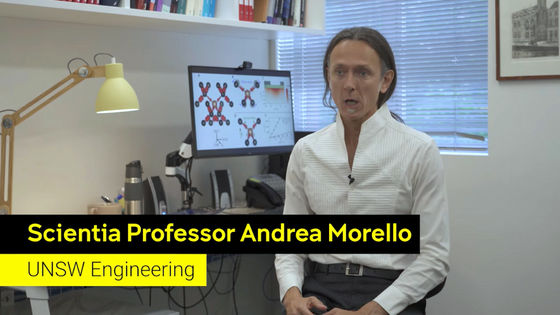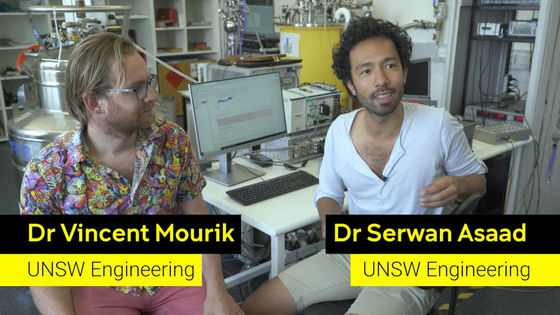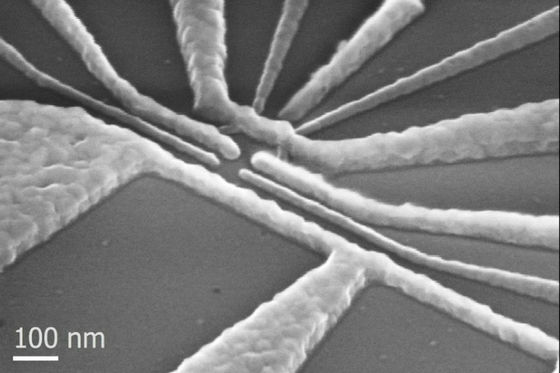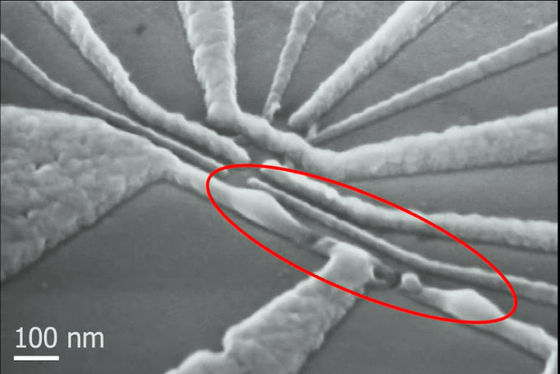Discovery that innovates quantum computer is born from `` explosion of equipment ''

By
Accidental discovery, such as the discovery of penicillin and polyethylene, has greatly advanced modern science and technology. It has been reported that discoveries with the potential to make significant advances in quantum computer technology, which is about 100 million times faster than conventional PCs, were also created by accidents that occurred in the laboratory.
Coherent electrical control of a single high-spin nucleus in silicon | Nature
https://www.nature.com/articles/s41586-020-2057-7
Engineers crack 58-year-old puzzle on way to quantum breakthrough | UNSW Newsroom
https://newsroom.unsw.edu.au/news/science-tech/engineers-crack-58-year-old-puzzle-way-quantum-breakthrough
On March 11, 2020 (Wednesday), a research team including Andrea Morero, a quantum engineering professor at the University of New South Wales, published a paper on Nature that found the discovery of `` nuclear electric resonance ''. Was reported. Nuclear electrical resonance, predicted by Nobel Laureate in Physics Nicholas Bloombergen in 1961, was a phenomenon that no one had been able to detect for nearly 60 years.
'Nuclear electrical resonance is a way to control the poles of a single nucleus without generating a magnetic field. This finding means a new way to build quantum computers. And suggests the further development of quantum computer technology.

Until now,
Nuclear electric resonance, on the other hand, can control the magnetic poles of the nucleus with an electric field generated even at the tip of a small electrode. Mr. Morero compares the control of nuclei with magnetic and electric fields to billiards: 'Nuclear magnetic resonance is like trying to hit a ball with the entire billiard table constantly shaking. Instead, all other balls move, and nuclear electrical resonance is like hitting a ball on a fixed billiard table, so you can move just the ball you want. ' .
Nuclear electrical resonance was accidentally discovered by a failed experiment conducted by Vincent Mourik (left) and Selwan Asado (right), who are working with Morello.

Originally, the research team of Morello et al. Conducted an experiment to perform nuclear magnetic resonance on a single nucleus of
The image below shows the antenna used in the experiment, before the explosion. Due to the strong power applied to this antenna ...

The area surrounded by the red circle was burned out by the explosion.

According to Mourik, if the antenna burns out, it must be discarded because it will not be usable normally. However, it turned out that the antenna that leaked due to the burnout and the antimony nucleus resonated.
'It was a moment when we realized we were doing nuclear electrical resonance, not nuclear magnetic resonance,' said Asado. A closer examination revealed that the strong electric field created by the antenna leakage caused nuclear electrical resonance of the antimony nucleus.
Since nuclear magnetic resonance does not require a strong magnetic field, it significantly reduces the power consumption of quantum computers and MRIs that have been created by nuclear magnetic resonance, and controls quantum computers' qubits more efficiently. It is expected to provide a foothold for further development in the field of quantum science, such as methods and speed of development. 'The breakthrough research in nuclear electrical resonance will open a treasure trove of discovery and application,' Morero said.
Related Posts:
in Science, Posted by darkhorse_log







